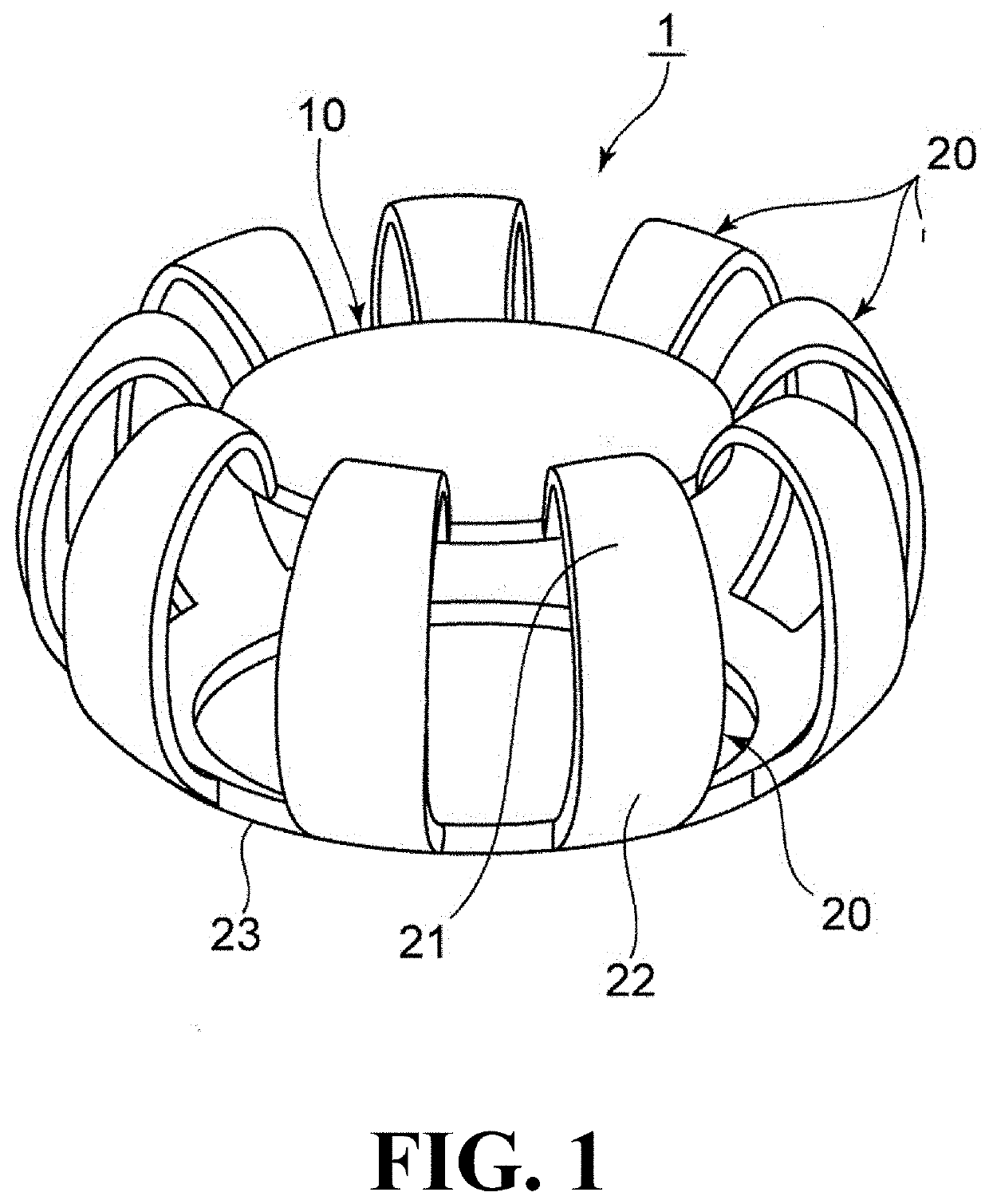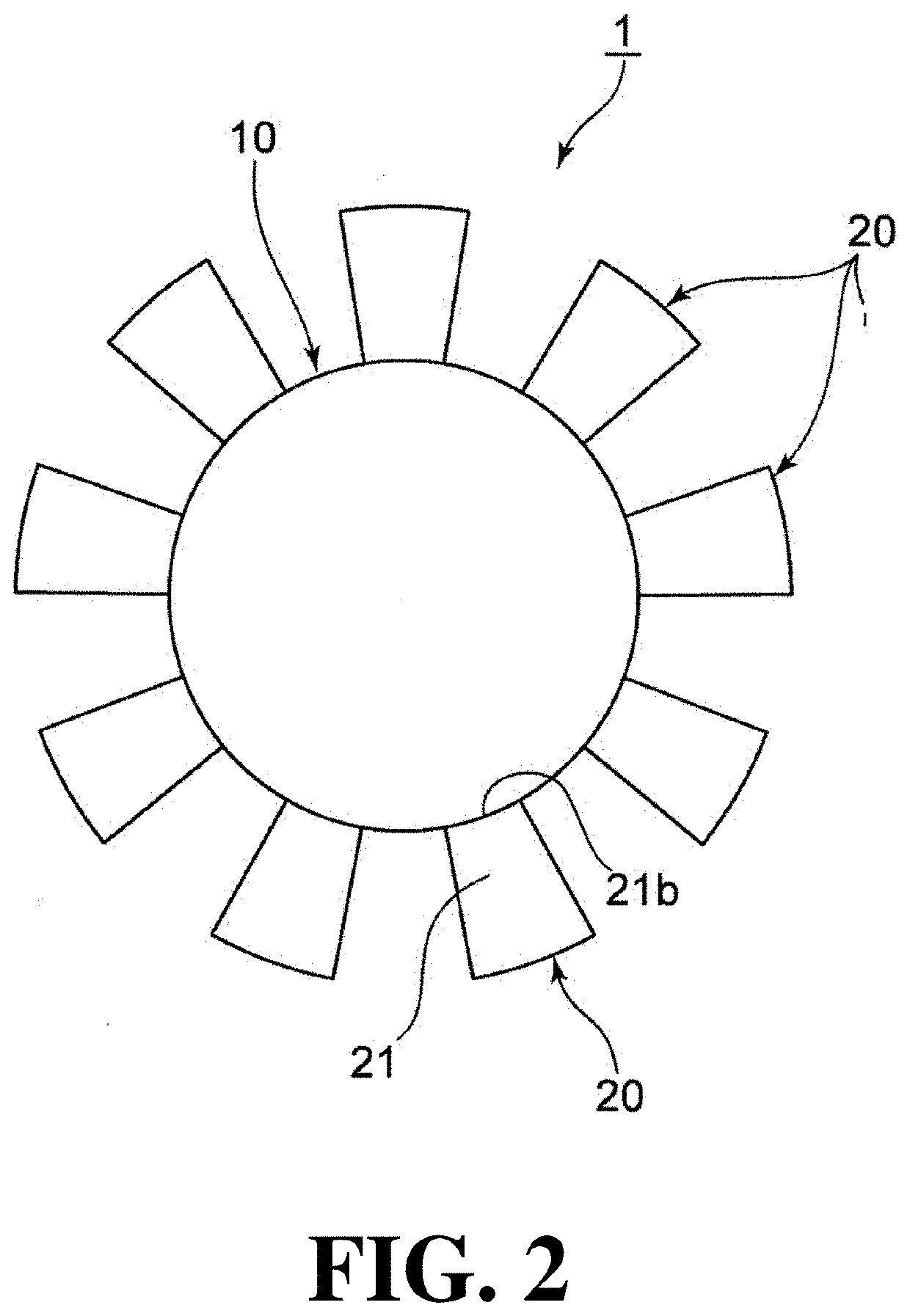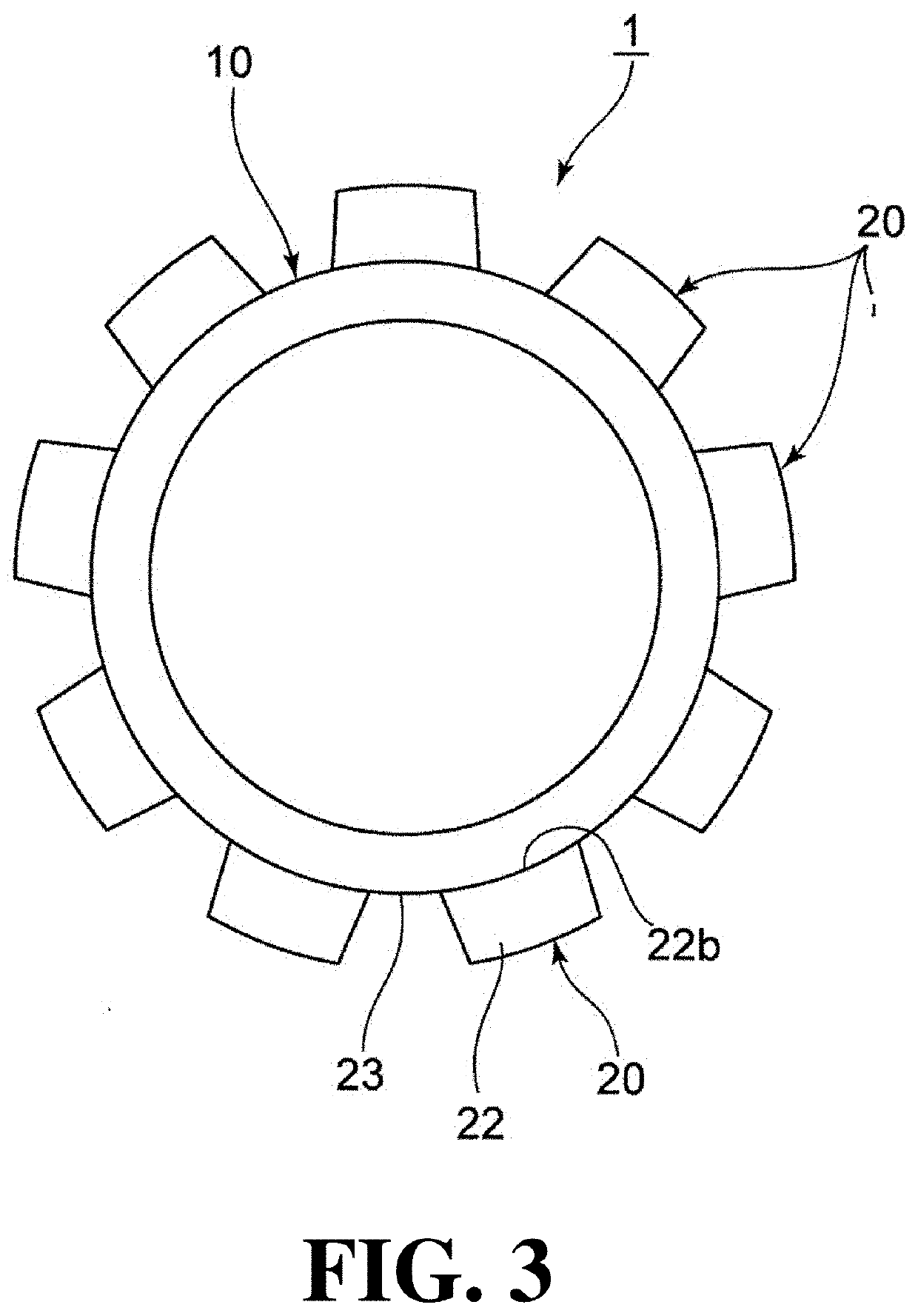Accommodative intraocular lens
- Summary
- Abstract
- Description
- Claims
- Application Information
AI Technical Summary
Benefits of technology
Problems solved by technology
Method used
Image
Examples
first embodiment
[0041]Next, with reference to FIG. 1 to FIG. 5, a first embodiment of an accommodative intraocular lens according to the present invention (hereinafter referred to as this lens 1) will be described. Note that the following description will be made assuming that the upper side of each drawing denotes a front side of a human eye, and the lower side of each drawing denotes a rear side of the human eye.
[0042]As shown in FIG. 1 to FIG. 4, this lens 1 is provided with an optical portion 10 and nine support portions 20 arranged around the optical portion 10 to support the optical portion 10, and is used by being installed in a lens capsule S whose anterior capsule has been incised in ophthalmic surgery as shown in FIG. 5.
[0043]The optical portion 10 is a convex lens made of a synthetic resin material, such as, e.g., silicone, acryl, hydrogel, PMMA, HEMA, and hydro-polymer, and has a diameter w1 of 4 mm to 7 mm in a plan view. The shape and material of the optical portion 10 are not limited...
second embodiment
[0065]Next, a second embodiment of this lens 1 will be described with reference to FIG. 6. In the following description, only configurations different from the above-described embodiment will be described, and the same reference numeral will be given to the same configuration without description.
[0066]In this embodiment, the anterior support portion 21 is provided with a regulating member 25 for maintaining the radial position of the base end portion 21a connected to the posterior support portion 22. The regulating member 25 is formed in such a manner that the base end portions 21a of the adjacent anterior support portions 21 are circumferentially connected to each other.
[0067]This restricts the anterior support portion 21 from moving radially outward of the base end portion 21a, so that it is possible to reliably deflect the anterior support portion 21 backward or return forward while maintaining the position of the base end portion 21a in the radial direction.
third embodiment
[0068]Next, a third embodiment of this lens 1 will be described with reference to FIG. 7.
[0069]In this embodiment, the anterior support portion 21 is provided with a regulating member 26 for maintaining the radial position of the base end portion 21a connected to the posterior support portion 22. The regulating member 26 is formed in such a manner as to project radially outward at a height position of the lens capsule equatorial portion Se on the outer peripheral surface of the anterior support portion 21, and is arranged so as to come into contact with the lens capsule equatorial portion Se.
[0070]This restricts the anterior support portion 21 from moving radially outward of the base end portion 21a, so that it is possible to reliably deflect the anterior support portion 21 backward or return forward while maintaining the position of the base end portion 21a in the radial direction.
PUM
 Login to View More
Login to View More Abstract
Description
Claims
Application Information
 Login to View More
Login to View More - R&D
- Intellectual Property
- Life Sciences
- Materials
- Tech Scout
- Unparalleled Data Quality
- Higher Quality Content
- 60% Fewer Hallucinations
Browse by: Latest US Patents, China's latest patents, Technical Efficacy Thesaurus, Application Domain, Technology Topic, Popular Technical Reports.
© 2025 PatSnap. All rights reserved.Legal|Privacy policy|Modern Slavery Act Transparency Statement|Sitemap|About US| Contact US: help@patsnap.com



